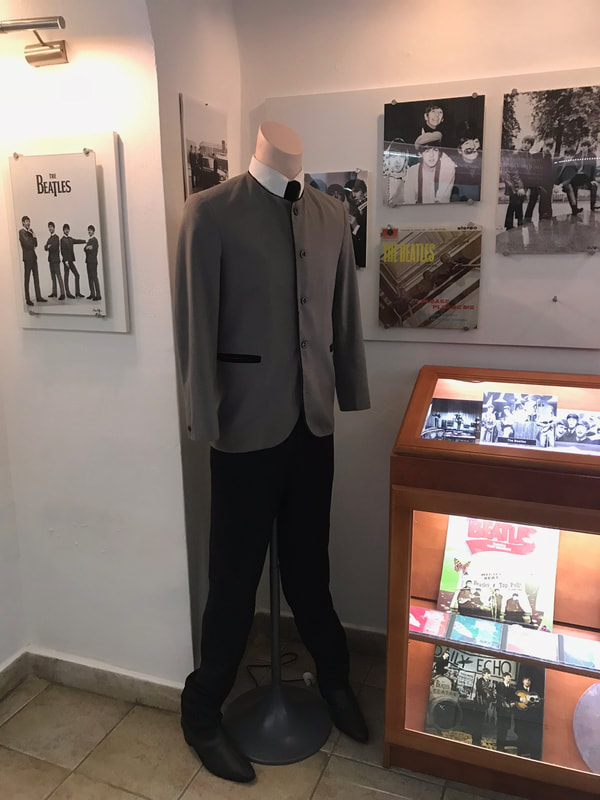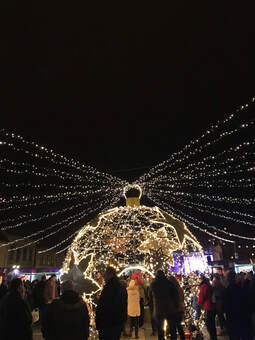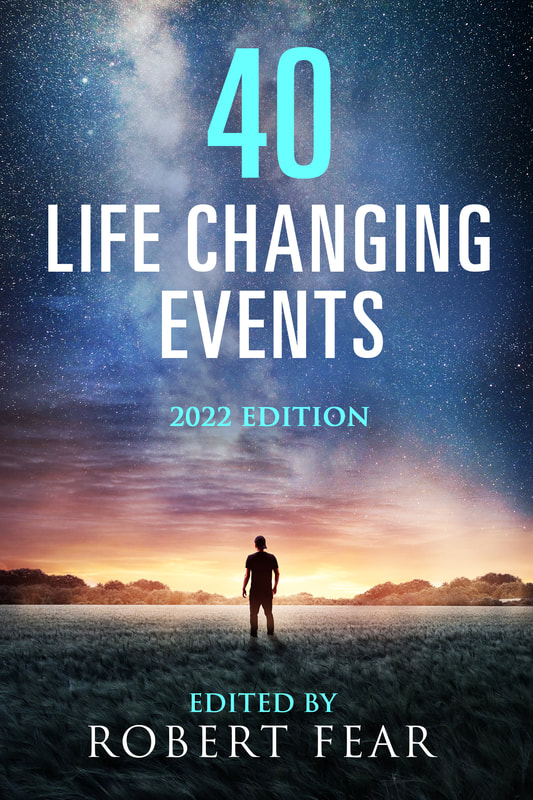A Day in Eger by James Robertson
My girlfriend and I sat by the side of the window, looking out at the wintry countryside that glided past our view. The train pushed through the northern lands of Hungary, in the chilly ending of November. Our heads resembled tea cosies; we were wrapped up in layers of woollen scarves and toasty jumpers. We approached the city of Eger, a place we’d both never been to. Although she lived not even two hours away, it was as though we were exploring as tourists in her own country.
The train crawled to a halt outside the weathered facade of Eger Station. Hopping across tracks to reach the mouth of the city, our bodies became normalised to the frosty air.
Breathing out plumes of mist, we approached the Érsekkert, a park made for the Archbishop of Eger. Wet, autumnal leaves spotted the path cutting through the bare trees to an empty fountain in the centre of the gardens. While the rest of the park was succumbing to winter, small flowers of purple, yellow and white encircled the fountain like a beaded necklace.
A statuette couple stood at a bench by the side of a small pond; they were apparently both writers. They overlooked the tiny gold fish that slinked in an erratic manner beneath the short, brick causeway that we walked across.
Amongst the threadbare trees, squirrels quarrelled amongst the branches. Boxing and sparring in a manner that was too absurd not too watch; we dubbed it the ‘Great Hungarian Squirrel Fight’.
Upon exiting the Érsekkert, we came across our first church; a colossal building, with its two lofty bell-towers slapped with warm, yellow paint. It was like a tall, radiant sunflower in the company of many drab, tired weeds. Inside, Baroque decorations of every shape and size adorned the walls. Immaculate mahogany pews lined either side of the church, finishing in an elaborate, glowing pulpit at the end.
We continued on to the town square where a market was set up in the shadow of another monumental, white church. Churches; so many churches! The inside of this one mimicked our previous ecclesiastical encounter to a far grander scale. What caught my eye, however, was a frame in the entrance hall displaying a proverb of sorts, accompanied by a decidedly art deco style rendition of a bowl full of hearts. What did it say, I wondered?
The market hadn’t yet revved into gear. Stalls were still opening, but for those that were in business, as tempting as they looked, we decided to leave them for a later time.
From the square, we ascended the winding hillside roads and made our way up to Eger Castle. An extensive medieval construction, it was besieged by the Turks numerous times in the 15th century.
How I knew this, you ask? The castle’s museum was very extensive.
But the point is, the castle still stands today, overlooking the town which has changed so much in its wake.
We walked along the castle walls and past cone-roofed fortifications. Small, mustard-coloured patches of grass grew from the ye olde brick-work, waving slightly in the wind. We walked past three crucifixes, standing at the peak of the fortress as a pattering of rain began to descend on us.
Seeking shelter, we did what any self-respecting tourist would do, and looked up a place to eat on TripAdvisor. We found a restaurant named Szantofer Vendéglö tucked beside yet another church. With coats hung on stands, we settled on a dish of szüzpecsenye, a meat dish, along with tea to warm us up.
Satisfied with a great serving of food in our bellies, we moved on to a place you would never expect to find in a small Hungarian city… a Beatles Museum.
Beatles fans have trekked here to see one of only five official Beatles Museums in the world. Including Ringo Starr himself. This was proved to us by the owner of the museum, who kindly showed us a photograph of the drummer standing next him in the very room we were in now.
Memorabilia of the Fab Four adorned wooden cabinets, while a timeline of their rise to fame was displayed on the walls. A guitar, just like John Lennon’s Epiphone E230TD Casino, was linked to an amp for visitors to play any of the Beatles tunes they so desired. There was even a book full of sheet music!
The collection was truly extensive. Housed int this museum was every kind of Beatles paraphernalia you could think of. If it were not for the Hungarian text on the walls, I would have thought we were in Liverpool.
It was already dark when we left the museum, so we went back down to the town square where crowds had arrived to surge amongst the stalls. The cold now seeping back into our bones, we treated ourselves to a cup of hot mulled wine, readily made in vats at numerous stalls. I had kürtőskalács for the first time; a cylindrical, hollowed out cake coated in cinnamon. A wintry treat native to Hungary, it was far more filling than it appeared.
As we took a bench by the domineeringly Christmas tree, the festive lights flickered on in the branches, extending to the facades of the buildings and the edges of the Castle overhead. Locals bustled about in their coats and beanies, meeting with family and friends in the centre of the city. Underneath draped fairy lights, trumpeters blared from the balconies to signify the coming of the festive season.
For the first time, I felt like the spirit of Christmas finally made sense to me.
Sitting amongst the throngs of people in festal moods, I thought back to that obscure Hungarian proverb I saw written in the church. The memory of its striking font and illustration stayed in my mind. I asked my girlfriend if she could translate what was written from a photo I took.
It read; “You can only hold a hand, to let it go is a mistake, to push it away is a curse, interlocking hands holding together the sky and the world.”


















